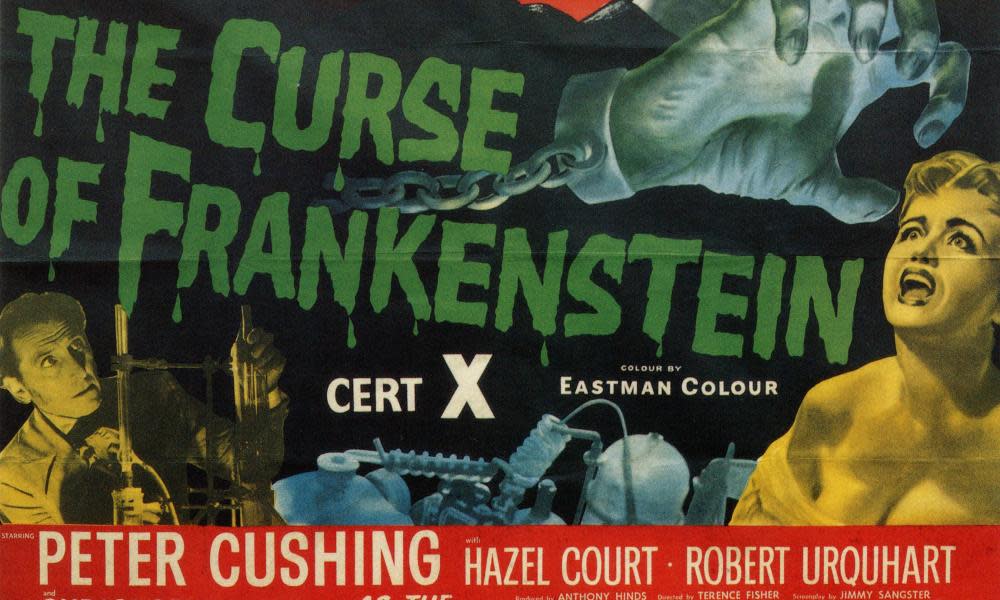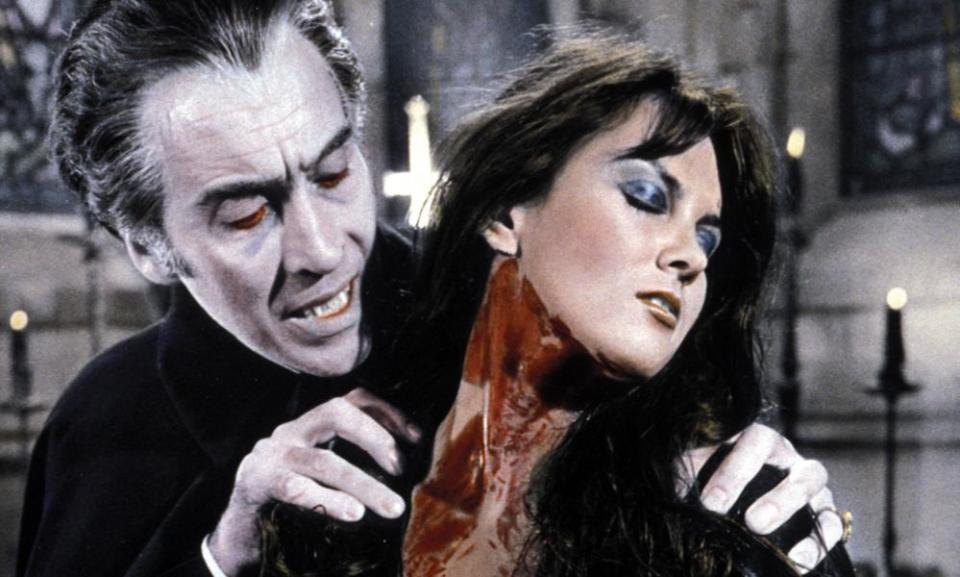Re-vamped: British horror film-makers Hammer and Amicus are back from the dead

Think of a classic horror film with an archetypal character such as Frankenstein or Dracula, or a movie with a name that does what it says on the tin, like Tales from the Crypt or Beyond the Grave, and the chances are you are thinking of a product by one of the “twins of evil”.
Hammer and Amicus were the studios that defined British horror cinema and bestrode the 1960s and 1970s, employing a wealth of British acting talent including Christopher Lee and Peter Cushing. Casts included names such as Michael Gough, Ralph Bates, Ingrid Pitt, Patrick Magee and Joan Collins.
Hammer is famous for its gothic output, which often took as its starting point the classics of supernatural literature, especially Frankenstein and Dracula, with Christopher Lee taking the role of the Transylvanian bloodsucker in seven movies beginning with 1958’s Dracula.
But by the late 1970s, the landscape of supernatural cinema was changing. The Exorcist, Rosemary’s Baby and The Omen had redefined horror and the schlocky period scares of Hammer and Amicus fell out of favour. Now, after decades in the wilderness – aside from the Hammer name’s brief resurgence in 2012 with the Daniel Radcliffe-led adaptation of Susan Hill’s The Woman in Black – both film houses are, well, back from the dead.

Hammer has been revived with a bang with its first new movie – Doctor Jekyll – hitting cinemas this week, following the announcement in August that the studio had been taken over by the John Gore Organisation, primarily known as a producer of blockbuster Broadway and West End theatre shows.
For John Gore himself, though, acquiring Hammer has been a long-held dream. “My first ambition was film, but theatre took over,” he says. “And I have loved Hammer since I was a kid, since I first saw Christopher Lee and Peter Cushing in Dracula.”
Doctor Jekyll – starring comedian Eddie Izzard as Nina Jekyll, disgraced chief executive of a big pharma company with a mind-bending secret – is the first release by the new Hammer. It is at work on developing a slate of new horror movies, about which Gore can reveal little. He can say, though, that the plan is to have a big Hammer horror release around Halloween every year.
And what of Amicus? It, too, is back, but on a slightly smaller scale.
“Can we elevate Amicus Productions beyond the confines of what the BBC labelled in 1971 as Britain’s ‘tiniest film studio’?” says Lawrie Brewster, the man behind the revival. “Unquestionably. Our primary aim is to create films that respect and honour the legacy of Amicus. We don’t aspire to outshine the Amicus classics – that’s not our prerogative. Our mission is to craft films that celebrate the golden era of British horror, paying respect to the rich traditions of yesteryear.”
Can either Hammer or Amicus be relevant to modern audiences? There’s certainly the nostalgia factor to take into account. Jeremy Dyson of The League of Gentlemen, co-author of the novel The Warlock Effect with Andy Nyman, is one of many people working in TV and film today who remembers them fondly.
“Both Hammer and Amicus were so much a part of my imaginative landscape,” says Dyson. “My first introduction to them was through books, in which were frozen these stills from the movies, which fascinated me long before I got to watch the films.
“These studios were the British film industry for many years, and even so a lot of these films were considered down and dirty, and disregarded by the establishment. Can they come back? They’re just names, really, so it means getting as talented a group of people working on them as they had in their heyday, and if they can do that, I don’t see why not, if the stars are aligned.”
Hammer, especially, was famous for actresses who appeared heaving of bosom and in a state of undress – so much so that websites, Facebook groups and books are devoted to the “Hammer Glamour” scream queens such as Pitt, Valerie Leon, Madeline Smith and Caroline Munro.
Munro presents the Friday night Cellar Club segment on Talking Pictures TV, introducing old horror and thriller movies. She starred in films for Hammer – Dracula AD 1972 and Captain Kronos: Vampire Hunter – and in Amicus’s At The Earth’s Core. She runs a lively Facebook group and regularly attends conventions where Hammer fans queue up for her autograph.
“I think it’s wonderful that both names are coming back,” she says. “It’s a huge boost for the British film industry, and I think there is massive potential for both Hammer and Amicus to rise again.
“They are still both very well-regarded names, and if those running them now can make films with the same love and care that Hammer and Amicus did in their prime, I would love to see them succeed.”
At 74, Munro is still acting in horror movies – she is in a new movie to be released in 2024, The Presence of Snowgood. But perhaps the days of Munro in thigh-high boots and not much else, as she appeared in Dracula AD 1972, and the other scream queens who typified 1970s horror,may prove slightly more problematic today.
For Jamie-Lee Nardone, a self-confessed “horror nerd” who runs a book PR agency dealing with horror and fantasy fiction, the return of both studios is not surprising.
She says: “There’s a current horror boom which is incredibly exciting; films are topping the box office, women in the industry are more successful than ever, genre publishing is growing exponentially, theme park rides have been inspired by franchises.
“And though the horror movie landscape is very different to what it was, the shadow of Hammer and Amicus still looms over it.
“Watch any recent horror film or TV show and you can see the callbacks and influences – they were hugely instrumental to the creation of our contemporary industry, and continue to be,” says Nardone. “Without them, would we now have the wealth of talent today? The inspiration is everywhere – from Inside No 9 and Black Mirror, to the films of Jason Blum, , Tim Burton, Martin Scorsese, John Carpenter, and Guillermo del Toro.”
Perhaps it’s Amicus, the studio once famous for depicting on-screen blood, gore and nudity, that will be the torchbearer for the golden age, he suggests. “It appears to want to cater as more of a homage in terms of bosoms and blood, bringing something once dead back to life, and transporting us back to that time.
“And there’s definitely a place for that. When it comes to horror, nostalgia is still king, but let’s hope with a little more diversity and forward-thinking – it doesn’t necessarily have to stay in the past. Sometimes things stay dead for a reason.”

 Yahoo Movies
Yahoo Movies 
